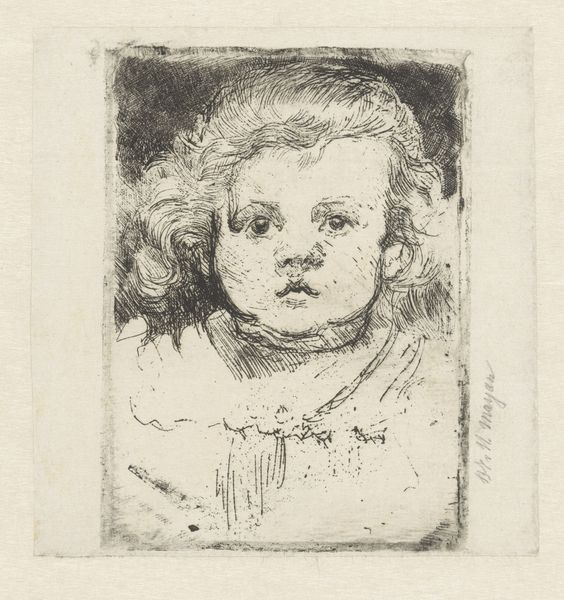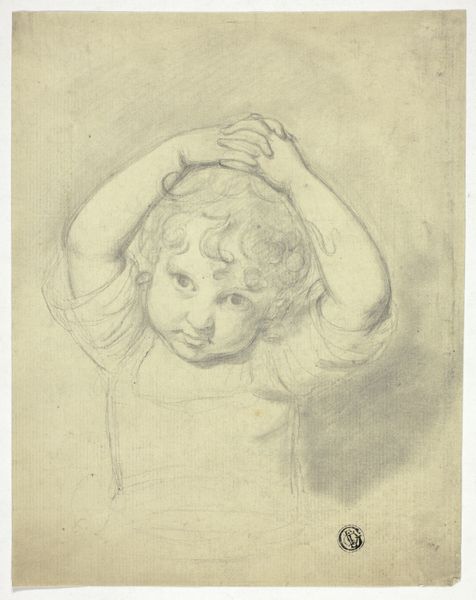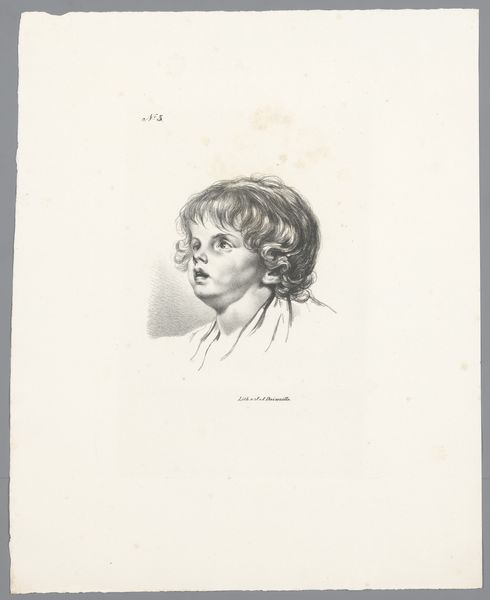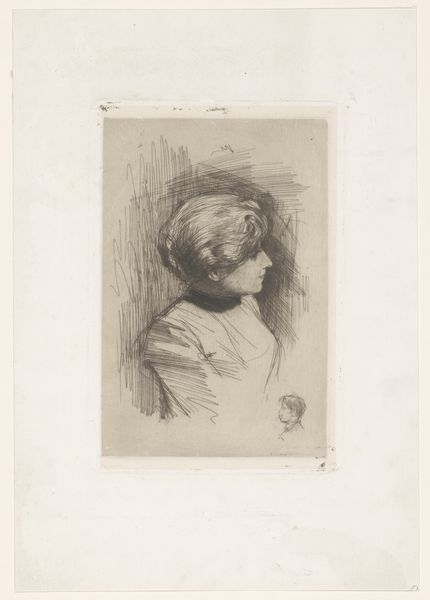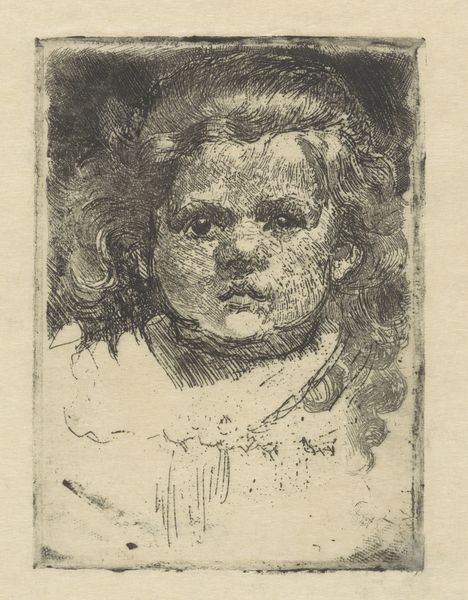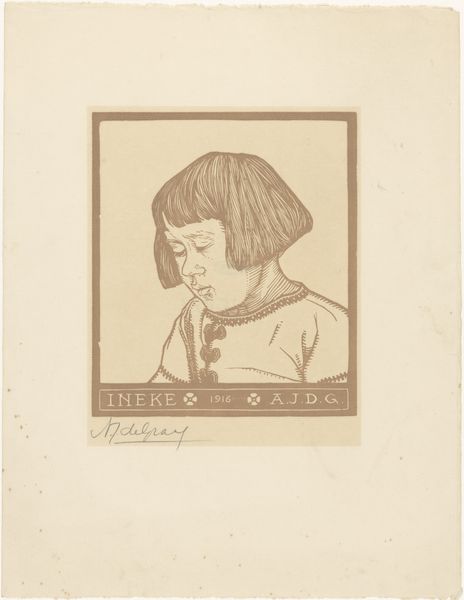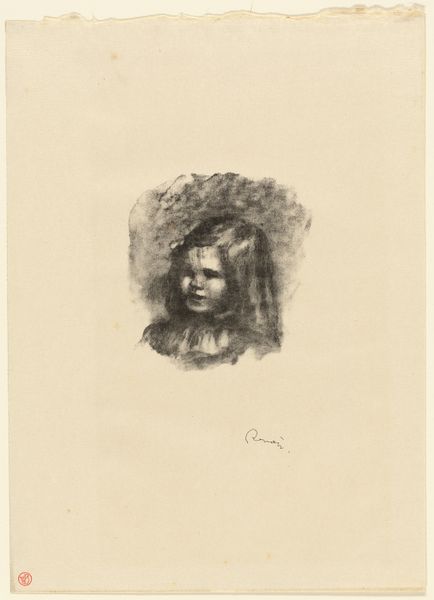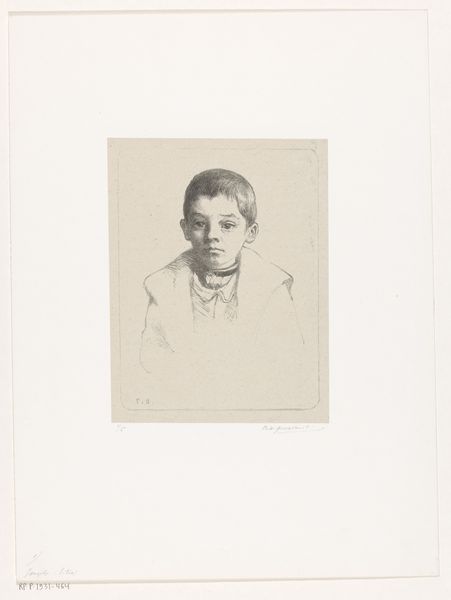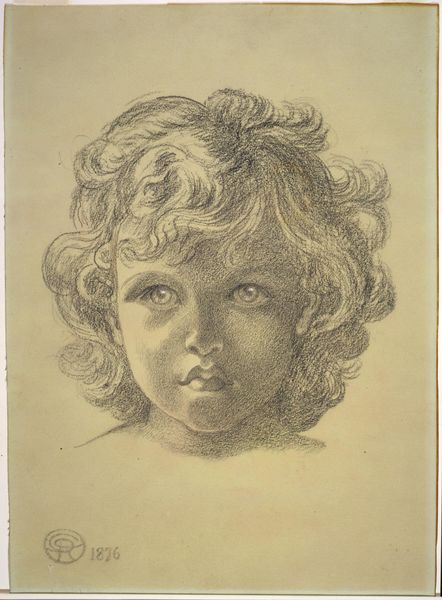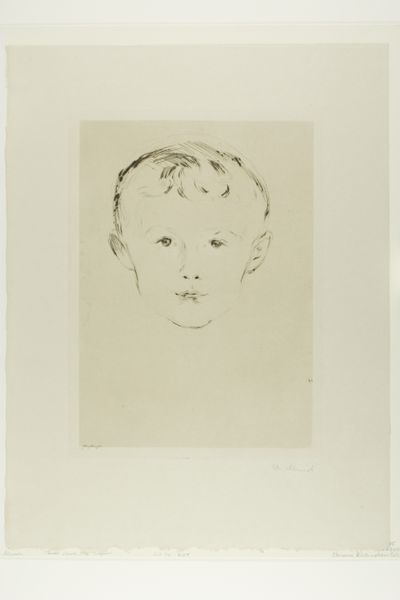
drawing, print, etching, intaglio
#
portrait
#
pencil drawn
#
drawing
# print
#
etching
#
intaglio
#
pencil sketch
#
caricature
#
pencil drawing
#
portrait drawing
Dimensions: height 216 mm, width 179 mm
Copyright: Rijks Museum: Open Domain
Editor: Here we have Lodewijk Schelfhout's "Andreas I," created in 1916. It’s an etching, and its delicate lines give the subject such a pensive, almost melancholic air. What symbols or deeper meanings do you see in this portrait? Curator: That melancholic air, as you describe it, is key. Notice how the child’s eyes are closed, face turned inward. This posture speaks to a psychological interiority, a world of private emotions, accentuated by the period. Remember, 1916 was the height of World War I. Editor: So, could this be a representation of the innocence lost during that era? Curator: Precisely! Children frequently become symbols of vulnerability during wartime. The downcast gaze is not just an individual expression; it embodies a collective grief, a silent acknowledgement of suffering during the war, reflecting cultural memory. The child's physical features verge on caricature, emphasizing vulnerability, wouldn’t you agree? Editor: I see that now! And it looks like the medium adds another layer— the fragile lines of the etching, mirroring the delicate state of childhood and perhaps society. Curator: The choice of etching, intaglio, enhances that sense of delicacy but also conveys a feeling of something etched in time, like a memory permanently marked. Are there are any repeating elements, textures, or objects, or overall tones that stick out to you? Editor: It definitely is a lot to unpack, this blend of personal feeling and the larger world events. Thank you! Curator: A poignant piece, reminding us how individual emotions become powerful symbols reflecting historical anxieties. We've seen the emotional power contained in such works and how they gain cultural weight and meaning across generations.
Comments
No comments
Be the first to comment and join the conversation on the ultimate creative platform.


